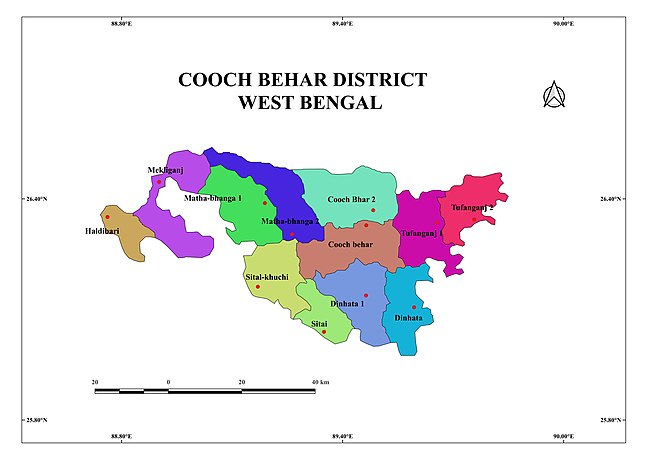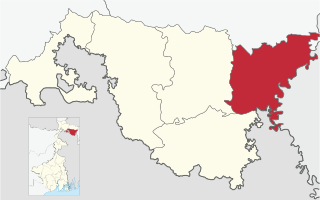Population
According to the 2011 Census of India, the Tufanganj I CD block had a total population of 248,595, of which 243,256 were rural and 5,339 were urban. There were 128,415 (52%) males and 120,180 (48%) females. There were 29,090 persons in the age range of 0 to 6 years. The Scheduled Castes numbered 115,000 (46.26%) and the Scheduled Tribes numbered 378 (0.15%). [8]
According to the 2001 census, Tufanganj I block had a total population of 222,993, out of which 113,825 were males and 109,164 were females. Tufanganj I block registered a population growth of 16.47 per cent during the 1991-2001 decade. [9]
Census towns in the Tufanganj I CD block are (2011 census figures in brackets): Kamat Phulbari (P) (5,339). [8]
Large villages (with 4,000+ population) in the Tufanganj I CD block are (2011 census figures in brackets): Natabari (6,113), Chhat Rampur Dwitiya Khanda (5,773), Dhalpal (7,319), Charaljani (6,534), Airani Chitalia (5,036), Jaigir Chilakhaa (8,712), Andaran Phulbari (P), Ghogarkuthi Pratham Khanda (10,826), Chilakhana (9,263), Maradanga (8,775), Balarampur (34,113), Deocharai (7,849), Chamta (8,190), Dwiparpar (5,256), Nakkatigachhi (4,243), Jhaljhali (4,072), Krishnapur (5,740), Balabhut (10,008) and Jhaukuthi (4,273). [8]
Other villages in the Tufanganj I CD block include (2011 census figures in brackets): Dhadial (3,870) and Bhuchungmari (1,541). [8]














